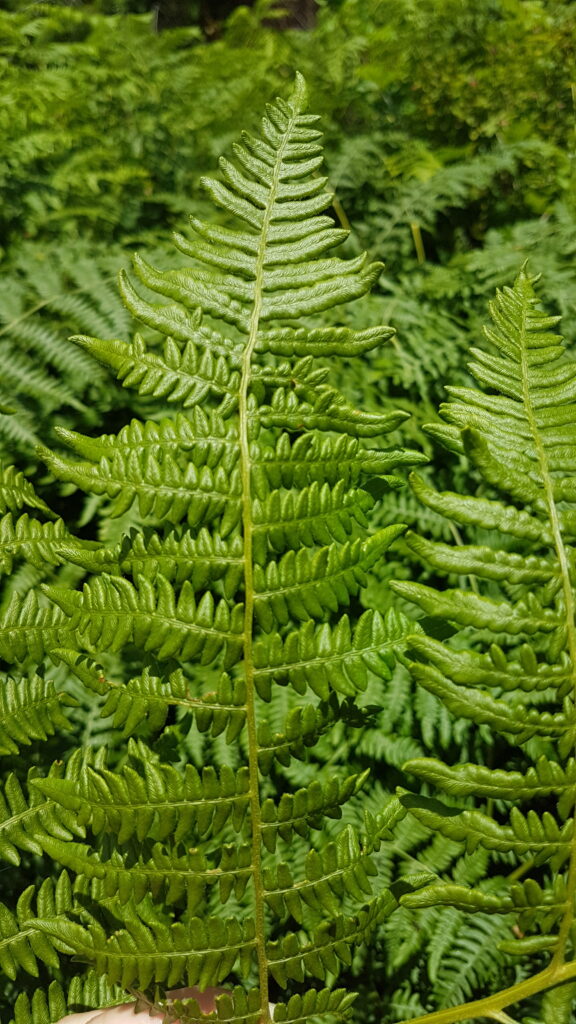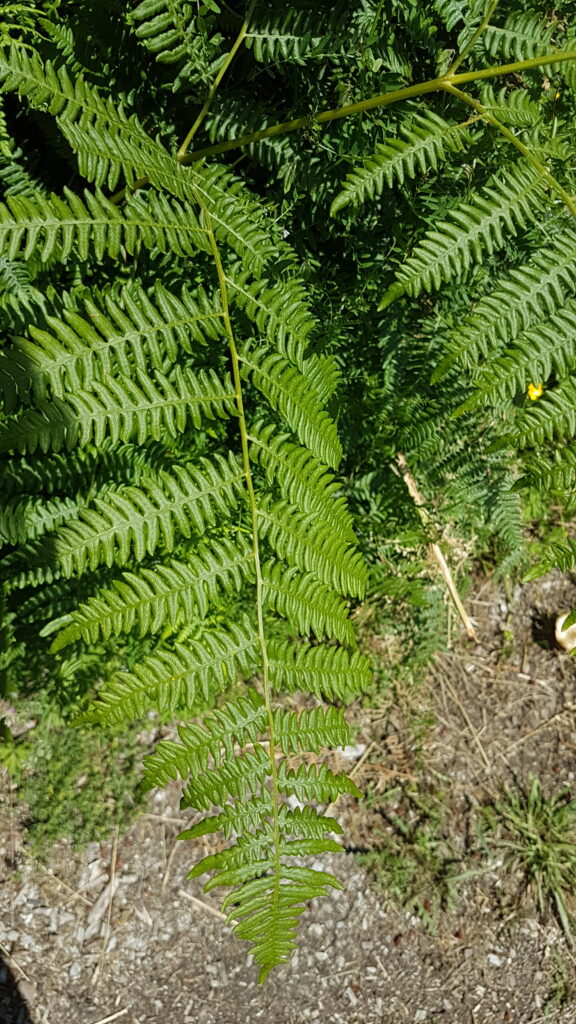Bracken Fern (Pteridium aquilinum)

Bracken ferns have large, triangular leaves which grow from a central stem. The leaves are tripinnate, which means that the main stem divides into many leaflets, which are each divided into smaller leaflets. Bracken ferns reproduce through spores, which look like small, brown spots arranged in bands on the undersides of the leaves. Bracken ferns are perennials; the leaves die back in the winter, but the fern grows back from the underground rhizome in the spring.

The bracken fern is extremely widespread, and is found in temperate and subtropical regions worldwide. It often grows in disturbed areas, such as roadsides, and the edges of forests. It can also grow in areas that were recently cleared by fires. Bracken fern spores are very light and can be dispersed over long distances by the wind, which allows the bracken fern to colonize new habitats.

First Nations groups in BC used bracken fern leaves for cleaning fish, and for fuel to start fires. They also cooked and ate the rhizomes and young fronds (called fiddleheads). However, bracken ferns are toxic to humans if eaten in large quantities.
For more information about bracken ferns, visit E-Flora BC or the Biodiversity of the Central Coast website.


